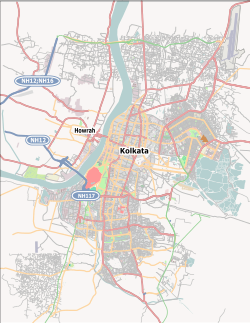| Tipu Sultan Masjid | |
|---|---|
 The mosque at night, in 2023 | |
| Religion | |
| Affiliation | Sunni Islam |
| Sect | Barelvi and Sufism |
| Festival | Eid-ul-Milad-un-Nabi |
| Ecclesiastical or organisational status | Mosque |
| Leadership | Imam Abdus Sukur |
| Status | Active |
| Location | |
| Location | 135 Prince Anwar Shah Road, Tollygunge, Kolkata, West Bengal |
| Country | India |
Location of the mosque in Kolkata | |
| Administration |
|
| Geographic coordinates | 22°30′06″N88°20′43″E / 22.50176°N 88.34540°E |
| Architecture | |
| Type | Mosque architecture |
| Style | Indo-Islamic |
| Founder | Ghulam Muhammad Sultan Sahib |
| Groundbreaking | 1852 |
| Completed | 1860 |
| Specifications | |
| Dome(s) | Six (maybe more) |
| Minaret(s) | Four (maybe more) |
The Tipu Sultan Masjid, also called Shaheed Tipu Sultan Masjid, is a Sunni mosque, located on Prince Anwar Shah Road in Tollygunge, Kolkata, in the state of West Bengal, India. [1] [2] [3]
